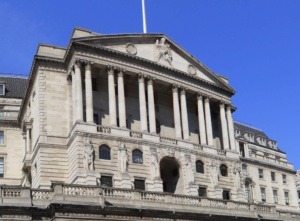Who is ready for the end of LIBOR?
Under the IBA plans 30 of the 35 current LIBOR rates or tenors, as they are known, will cease to exist from the end of 2021

Britain’s regulator the Financial Conduct Authority (FCA) has published details of the state of readiness of the UK markets, for the end of LIBOR, the London Interbank Offered rate, a key interest rate benchmark that has been part of the lifeblood of the financial markets for decades, but which is being phased out after having been discredited.
Trillions of dollars worth of financial products have been linked to the interest rate benchmark since its introduction, and it is a vital rate system for Tier 1 interbank FX dealing, which relates to all aspects of OTC currency trading worldwide, London’s banks being responsible for over 50% of all global Tier 1 interbank FX order flow.
Transitioning these away from the reference rate is no mean feat, from either a practical perspective or the legal and regulatory one.
In a speech made to City & Financial’s Managing LIBOR’s Transition event, Director of markets and wholesale policy at the Financial Conduct Authority (FCA), Edwin Schooling Latter said that: “We (the FCA) see no case for delaying decisions or announcements beyond the time necessary properly to assess the consultation responses that have now been received”.
He added that “we should paint a picture of good news and good progress, the industry has been rising to this challenge”
The FCA believes that 85% of the uncleared UK derivative markets are ready for the end of LIBOR, as 12,5000 firms have now signed up to the International Swaps & Derivatives Association (ISDA) LIBOR transition protocol.
Many of these uncleared derivatives contracts are swap trades that have been struck between counterparties such as banks and hedge funds. The cash flows, margining and ultimate settlement of such trades are often managed bilaterally, between the counterparties to the trade.
Though regulators are encouraging swap traders to move to a centralised clearing model, that will likely happen over time. However, OTC swap trades can often be kept off-balance sheet and are therefore still popular among financial institutions.
The FCA also found that 97% of sterling-denominated derivatives contracts now included so-called “fallback clauses” related to the transition to SONIA, the Sterling Overnight Index Average. An interbank lending rate that will replace Sterling LIBOR, as a financing and reference rate, from the end of 2021 if all goes to plan.
The inclusion of these fallback clauses means that these contracts will not fall into a potential legal blackhole once sterling LIBOR is no longer calculated.
However, its not just sterling reference rates which are subject to change. In total 35 rates are ultimately set for cancellation and transition, under proposals set out by the ICE Benchmark Administration (IBA) who manage LIBOR on a day to day basis.
Under the terms of these proposals 30 of the 35 rates or tenors, as they are known, will cease to exist from the end of 2021. However, 5 US dollar tenors will continue to be used for a further 18 months but in only within legacy transactions and contracts, and not for new business.
The FCA, IBA and LIBOR users feel confident enough to suggest that four out of the five expert panels that have been overseeing the transition away LIBOR could shut up shop at the end of 2021. With the fifth and remaining panel likely to close at the end of June 2023, tying in with current end date for the use of US$ LIBOR.









